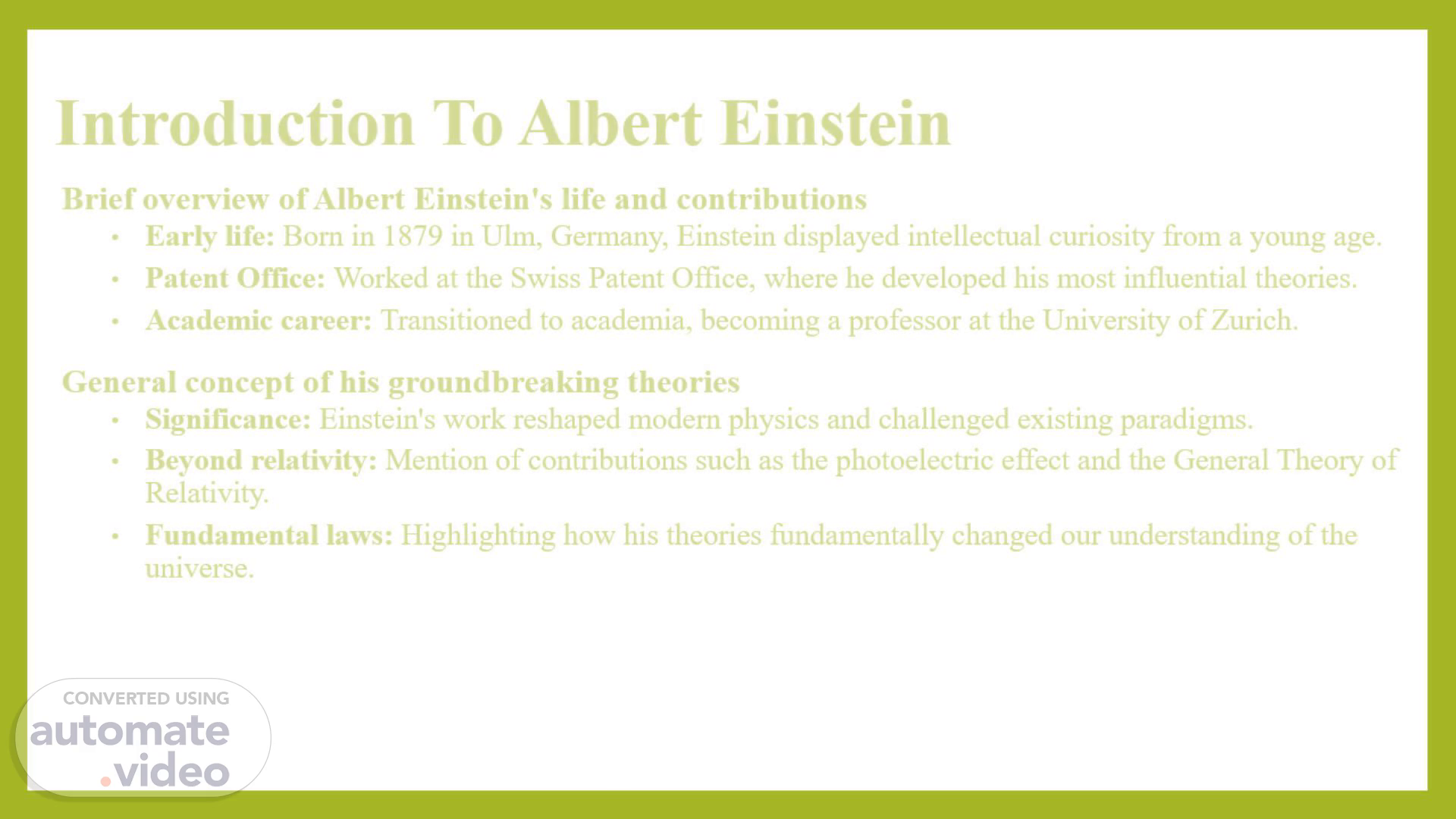
Introduction To Albert Einstein
Scene 1 (0s)
[Audio] Welcome, everyone. Today, we embark on a journey through the life and work of one of the greatest minds in the history of science — Albert Einstein. Born in 1879 in Ulm, Germany, Einstein's early life showed signs of exceptional curiosity. He later worked at the Swiss Patent Office, where he formulated some of his most influential theories before transitioning to academia. Einstein's profound impact goes beyond the Special Theory of Relativity, encompassing the photoelectric effect and the General Theory of Relativity. His work fundamentally reshaped our understanding of the universe..
Scene 2 (42s)
[Audio] Now, let's dive into the heart of Einstein's groundbreaking Special Theory of Relativity. This theory is built on two key postulates. The first is the Principle of Relativity, stating that the laws of physics are the same for all observers in constant motion. No observer has a privileged viewpoint. The second postulate is the Speed of Light Postulate, asserting that the speed of light is constant, unaffected by the motion of the source or observer. This was supported by the famous Michelson-Morley experiment, rejecting the existence of the ether. These postulates lead to fascinating consequences. Time dilation reveals that time passes more slowly for objects in motion, as illustrated by the twin paradox. Length contraction shows that objects in motion appear shorter along the direction of motion, demonstrated through a moving train example. And, of course, there's the iconic mass-energy equivalence, expressed by the equation E=mc², demonstrating the interconvertibility of mass and energy..
Scene 3 (1m 52s)
[Audio] Einstein's theories weren't just theoretical musings; they stood the test of experimental scrutiny. The Michelson-Morley experiment, which failed to detect the Earth's motion through the ether, supported the constancy of the speed of light. Time dilation experiments, involving atomic clocks on fast-moving airplanes and in high-gravity environments, provided empirical evidence. Particle accelerators confirmed relativistic effects, and Gravity Probe B demonstrated frame-dragging, as predicted by general relativity. The impact of these theories extends beyond the laboratory. The principles of relativity are not just concepts. They have practical applications, from ensuring the accuracy of GPS systems to advancing medical technologies like PET scans. Einstein's theories continue to guide theoretical physics, influencing our understanding of the cosmos and inspiring ongoing research and discoveries..
Scene 4 (2m 56s)
[Audio] As we conclude, let's reflect on Einstein's enduring legacy. His contributions have left an indelible mark on the scientific landscape. Einstein's theories remain relevant, continuously inspiring new generations of scientists and researchers. We celebrate his intellectual courage, his ability to question the status quo, and his unwavering commitment to unraveling the mysteries of the universe. Thank you for joining this exploration of Albert Einstein's work. I encourage you to delve deeper into the wonders of relativity, ask questions, and embrace the spirit of curiosity that Einstein exemplified. Now, I welcome any questions or discussions you may have..